Why Coyote Wanted People To Die For Their Own Good – A Caddo Nation Legend
Ellen Lloyd - AncientPages.com - Coyote is an adorable character one encounters in many Native American myths and legends.
Sometimes, Coyote is presented as a tricker, while the animal comes as a wisdom bringer on other occasions. Coyotes can teach, guide, or deceive depending on the circumstances.
“The basis of his character is the same in all myths; however, certain character traits of this extraordinary figure vary widely from region to region. Like real coyotes, mythological coyotes are usually notable for their crafty intelligence, stealth, and voracious appetite.
In some Native American myths, Coyote is a respected and admired cultural hero helping people; in others, he demonstrates many negative behaviors like arrogance, greed, and recklessness; in still others, he is a comic trickster character whose lack of wisdom gets him into trouble while his cleverness gets him back out. In some Native Coyote stories, he is even some sort of combination of all three at once.” 1
There are times when Coyote comes up with ideas that may sound reasonable at first, but pondering the consequences, one soon realizes the outcome is undesirable. It is what happened when Coyote suddenly suggested it would be best if all people died for their good.
In this influential legend from the Caddo Nation, a confederacy of several Southeastern Native American tribes, it is explained why Coyote, who is responsible for making death permanent, avoids people and is always hungry. His good intentions marked him for a lifetime.
As the Caddo Nation says, once a long time ago, when the world was new and people were immortal. They lived forever; no one died, and this led to problems. People had children, and soon, the world was crowded. It became apparent Earth could not sustain its population. People were hungry, and the chiefs gathered to discuss the problematic situation. Something had to be done because people lived in misery. A council was held, and various leaders offered proposals on how to deal with the problem.
“I think we should have people die, but only for a little while. After they have been dead for a time, let them come back,” one chief said.
A coyote pouncing in Yellowstone National Park. Credit: Yifei He - CC BY-SA 2.0
Coyote, who disagreed, stood up and said: “Oh, no. That is a terrible plan. If people come back after a little while, we will still have the same problem because no one will ever go away forever. I think death should be something that is for always.”
The other chiefs were dismayed with Coyote’s suggestion. They argued permanent death was unfair. People would miss their loved ones if they knew they would never return because they are dead forever.
Coyote’s plan was rejected, and the council decided people should only die for a little while and then come back to life again.
“The medicine men then went about building a grass house facing to the east. It was a special house in which the dead were to be brought back to life. “
We will put an eagle feather over the door,” said the chief medicine man, “and when somebody dies, the feather will fall off the door and turn red with blood. Then all the medicine men will know to come to the grass house and sing the spirit of the dead person back to life.”
When the people heard the new rules about death, they agreed that this was a good plan. They did not want their friends and family members to be gone forever. After a time, the feather over the grass house grew red with blood and fell off the door.
The medicine men all went into the grass house, and for about ten days, they sang to bring the spirit back to life. When they were done singing, the young man who had died was standing there in the middle of the grass house, alive again. Everyone who had known the young man rejoiced that he was alive among them once more.” 2
Coyote stood and watched as the medicine man brought people back to life, and he did not like this. To Coyote, it was simple. If there were people, there needed to be more food for everyone. Coyote was still convinced death must be permanent.
The next time, when the feather had fallen, Coyote followed the medicine men into the house. He sat there with the medicine men for days, listening to their songs to bring the spirit of the dead back.
Then something happened. As he sat there and listened to their songs, Coyote suddenly heard the sound of a whirlwind approaching the grasshouse. As Clayton Matt writes in his book Native American Mythology: Captivating Myths of Indigenous Peoples from North America, “Coyote knew that the spirit of the dead person was in this wind, and so when the wind approached the door of the house and tried to enter, Coyote jumped up and slammed the door shut, keeping the spirit outside.
When the spirit saw that the door of the grass house was shut, it moved on with the whirlwind and never came back. Because Coyote closed the door to the grass house that way, the spirits of the dead are never able to return to the land of the living. And when the people hear and see a whirlwind, they say, “Oh, that must be the spirit of someone who has just died. They are wandering and looking for a way to go to the land of the spirits.”
Though Coyote initially wanted death to be permanent, he was frightened by what he had done, and he ran away. He understood people would never see their loved ones again, and he felt everyone must despise him for his actions. “And ever since that time, he has been very cautious because he always fears that he will be punished for making death last forever, and he is always very hungry for no one will give him food anymore.” 2
If you enjoyed this article consider becoming a member. Our member section offers a wealth of informative and insightful articles similar to this one. Upgrading to a premium membership gives you access to all our articles, including our library of ancient and unexplained mysteries.
Written by Ellen Lloyd – AncientPages.com
Updated Oct 9, 2023
Copyright © AncientPages.com All rights reserved. This material may not be published, broadcast, rewritten or redistributed in whole or part without the express written permission of AncientPages.com
Expand for referencesMore From Ancient Pages
-
 ‘Yunatsite’ And Thought-Provoking Theory That Balkan Peninsula And Not Mesopotamia Was The Cradle Of Civilization
Featured Stories | Feb 14, 2023
‘Yunatsite’ And Thought-Provoking Theory That Balkan Peninsula And Not Mesopotamia Was The Cradle Of Civilization
Featured Stories | Feb 14, 2023 -
 On This Day In History: Henry VIII Ascended The Throne Of England – On Apr 22, 1509
News | Apr 22, 2016
On This Day In History: Henry VIII Ascended The Throne Of England – On Apr 22, 1509
News | Apr 22, 2016 -
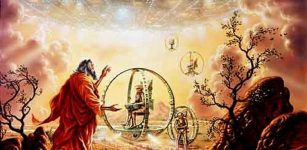 God’s Personal Flying Vehicle Described In ‘The Book of Ezekiel’
Biblical Mysteries | Jul 18, 2019
God’s Personal Flying Vehicle Described In ‘The Book of Ezekiel’
Biblical Mysteries | Jul 18, 2019 -
 4,700 ‘Forest Islands’ Created By Amazon’s Earliest Humans
Archaeology | Apr 15, 2020
4,700 ‘Forest Islands’ Created By Amazon’s Earliest Humans
Archaeology | Apr 15, 2020 -
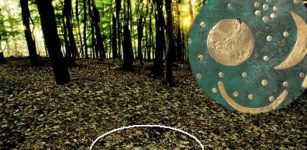 Mystery Of Nebra Sky Disk: New Analysis Shows Surprising Results
Artifacts | Sep 4, 2020
Mystery Of Nebra Sky Disk: New Analysis Shows Surprising Results
Artifacts | Sep 4, 2020 -
 New Light On Foodways In The First Cities In Mesopotamia
Archaeology | Nov 21, 2022
New Light On Foodways In The First Cities In Mesopotamia
Archaeology | Nov 21, 2022 -
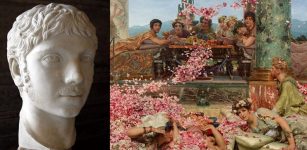 Controversial Roman Emperor Heliogabalus Wanted To Be A Woman And Much More
Featured Stories | Jun 14, 2020
Controversial Roman Emperor Heliogabalus Wanted To Be A Woman And Much More
Featured Stories | Jun 14, 2020 -
 Evolution Of Tree Roots Led To Ancient Mass Extinctions – Geologists Say
Archaeology | Nov 11, 2022
Evolution Of Tree Roots Led To Ancient Mass Extinctions – Geologists Say
Archaeology | Nov 11, 2022 -
 On This Day In History: Adventurer Thor Heyerdahl And His Kon-Tiki Reached French Polynesia – On August 7, 1947
News | Aug 7, 2016
On This Day In History: Adventurer Thor Heyerdahl And His Kon-Tiki Reached French Polynesia – On August 7, 1947
News | Aug 7, 2016 -
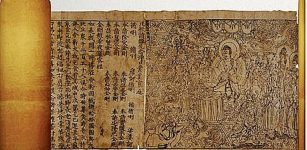 On This Day In History: ‘Diamond Sutra’ The Oldest Dated, Printed Book Is Published – On May 11, 868
News | May 11, 2016
On This Day In History: ‘Diamond Sutra’ The Oldest Dated, Printed Book Is Published – On May 11, 868
News | May 11, 2016 -
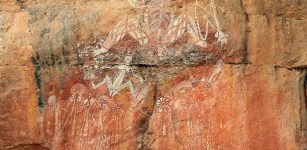 Machine-Learning Model Can Detect Hidden Aussie Rock Art
Archaeology | Jun 28, 2022
Machine-Learning Model Can Detect Hidden Aussie Rock Art
Archaeology | Jun 28, 2022 -
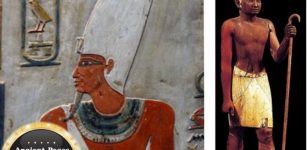 Mysterious Ancient Rulers With Elongated Skulls – Who Were They Really?
Ancient Mysteries | May 19, 2015
Mysterious Ancient Rulers With Elongated Skulls – Who Were They Really?
Ancient Mysteries | May 19, 2015 -
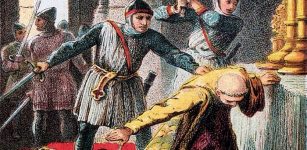 Murder Of Archbishop Thomas Becket: One Of Most Famous Crimes Of Middle Ages
Featured Stories | Jan 6, 2017
Murder Of Archbishop Thomas Becket: One Of Most Famous Crimes Of Middle Ages
Featured Stories | Jan 6, 2017 -
 Translated Ancient Text Offers Evidence Of An Unknown Sophisticated Civilization Present In All Corners Of The World
Ancient Mysteries | Sep 18, 2022
Translated Ancient Text Offers Evidence Of An Unknown Sophisticated Civilization Present In All Corners Of The World
Ancient Mysteries | Sep 18, 2022 -
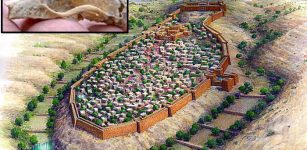 Findings From The First Temple Period Discovered In The City of David Corroborate A Biblical Event
Archaeology | May 4, 2024
Findings From The First Temple Period Discovered In The City of David Corroborate A Biblical Event
Archaeology | May 4, 2024 -
 Cambridge Supports Nigeria’s Claim For Return Of Benin Artefacts From University Collections
Archaeology | Aug 2, 2022
Cambridge Supports Nigeria’s Claim For Return Of Benin Artefacts From University Collections
Archaeology | Aug 2, 2022 -
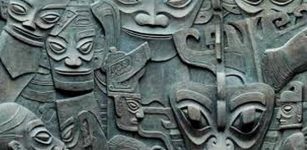 Baffling Sanxingdui Civilization: Why Did These People Have Fascination For Eyes?
Civilizations | Mar 21, 2017
Baffling Sanxingdui Civilization: Why Did These People Have Fascination For Eyes?
Civilizations | Mar 21, 2017 -
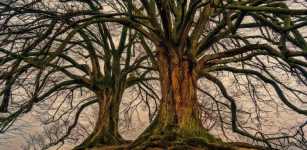 Why Human Languages Can Be Likened To Branches On A Tree And Help Finding A Single Common Ancestor
Linguistic Discoveries | Sep 11, 2021
Why Human Languages Can Be Likened To Branches On A Tree And Help Finding A Single Common Ancestor
Linguistic Discoveries | Sep 11, 2021 -
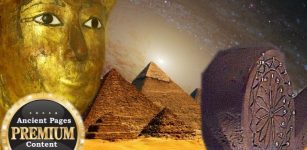 Antediluvian Artifact Discovered In Egyptian Tomb May Solve The Great Pyramid Mystery?
Ancient Mysteries | May 3, 2018
Antediluvian Artifact Discovered In Egyptian Tomb May Solve The Great Pyramid Mystery?
Ancient Mysteries | May 3, 2018 -
 Fossilized Remains Of A Gigantic Jurassic Pterosaur Unearthed In Oxfordshire, UK
Fossils | Jun 5, 2024
Fossilized Remains Of A Gigantic Jurassic Pterosaur Unearthed In Oxfordshire, UK
Fossils | Jun 5, 2024


